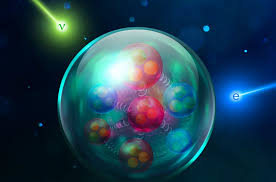NOvA (NuMI Off-axis νe Appearance) Experiment:

New data from the NOvA experiment deepens the mystery surrounding the mass of Neutrinos.
- NOvA (NuMI Off-axis νe Appearance) is an experiment to study one of nature’s most elusive particles: neutrinos.
- It is managed by the U.S. Department of Energy’s Fermi National Accelerator Laboratory, located outside of Chicago, United States of America.
- Fermilab sends a beam of neutrinos 500 miles north to a 14,000-ton detector in Ash River, Minnesota.
- By measuring the neutrinos and their antimatter partners, antineutrinos, in both locations, physicists can study how these particles change their type as they travel, a phenomenon known as neutrino oscillation.
- NOvA aims to learn more about the ordering of neutrino masses.
Neutrinos:
- They are elementary subatomic particles with no electric charge, very little mass, and 1/2 unit of spin.
- They travel at near light speeds.
- They belong to the family of particles called leptons, which are not subject to the strong force.
- They are often called ‘ghost particles’ because they barely interact with anything else.
- They are, however, the most common particle in the universe. Approximately 100 trillion neutrinos pass completely harmlessly through your body every second.
- Every time atomic nuclei come together (like in the sun) or break apart (like in a fission reactor or particle accelerator), they produce neutrinos.




